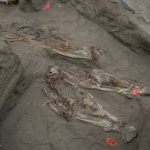Oct. 4 () –
Outside the tropics, El Niño-Southern Oscillation (ENSO) events have additional impact on North Atlantic weather patterns one year after the original phenomenon.
ENSO is a climate pattern that consists of the oscillation of the meteorological parameters of the equatorial Pacific every certain number of years.
Research from the UK Met Office shows that this one-year delayed extratropical response to ENSO is as strong as the simultaneous response, but with an opposite impact. The article is published in the journal Science.
For example, it has now been shown that El Niño, which can increase the likelihood of colder winters in the UK, may lead to a milder winter period the following year.
While ENSO is just one of many factors influencing the UK’s climate, it can be important, especially in the winter months.
Lead researcher Professor Adam Scaife, from the Met Office and the University of Exeter, said in a statement: “This latest research reveals that El Niño is often followed by a positive North Atlantic Oscillation (NAO) one year later, while La Niña is followed by a negative NAO one year later. The results of this research have important implications for understanding the ENSO, explain our winter climate variability and interpret long-term predictions.”
The research shows that knowledge of the previous winter’s ENSO event is also important for understanding some of the UK’s extreme winters. In cases where El Niño is followed by La Niña, or vice versa, the delayed effects can enhance the expected impacts.
For example, La Niña was followed by El Niño in 1968/69, 1976/77, 2009/10, which enhanced the resulting cold weather, while the UK experienced mild and stormy weather in the winters of 1988/89, 1998/99, 2007/8, when El Niño was followed by La Niña.
ENSO shifts back and forth irregularly every two to seven years, causing predictable changes in ocean surface temperature and alters wind and rain patterns in the tropics.
By better understanding the teleconnections and impacts of ENSO, meteorologists will be able to better reproduce them in climate models and better plan for variations in winter weather, according to the authors.









![[Img #74022]](https://thelatestnews.world/wp-content/uploads/2024/10/Beyond-the-Earth-Rafael-Clemente-150x150.jpg)





Add Comment